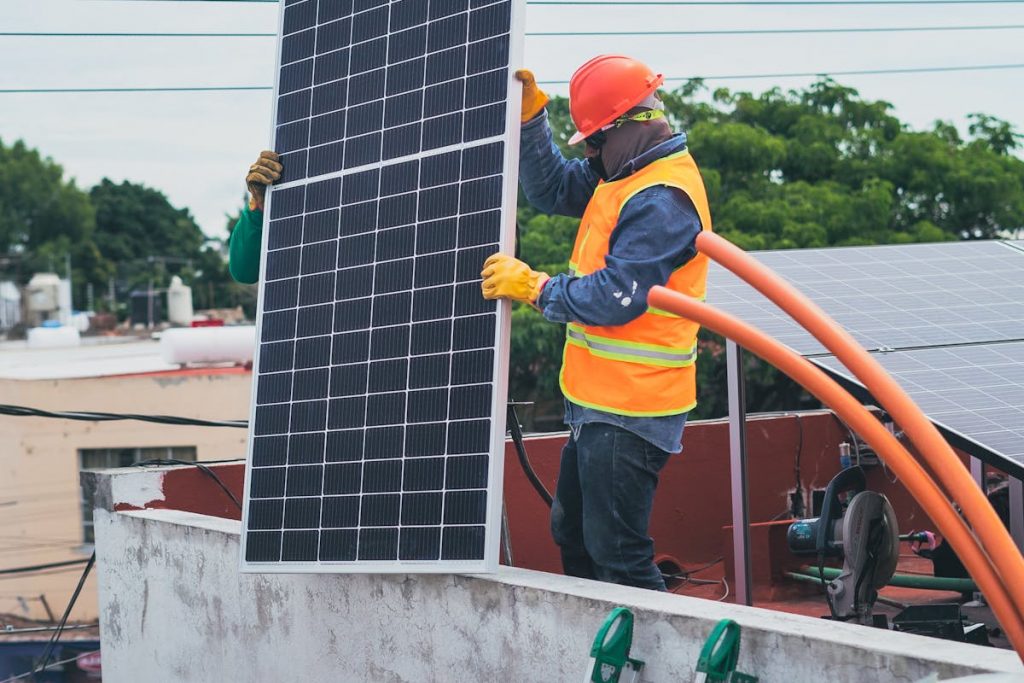

- Retailers can drive sustainability by aligning with eco-friendly suppliers and adopting ethical sourcing practices.
- Embracing energy efficiency through renewable sources and high-tech systems significantly reduces ecological footprint.
- Waste reduction initiatives include promoting recycling/composting and minimizing packaging waste in retail operations.
- Eco-conscious store design with sustainable materials and natural lighting can lower energy consumption.
- Educating and incentivizing customers toward sustainable choices is crucial for eco-friendly retail transformations.
As awareness of the pressing need for a sustainable future grows, it’s becoming increasingly clear that all industries, including retail, play a pivotal role. The retail sector, with its vast networks of goods and services, has both the potential and the responsibility to substantially impact the environment. In response to a growing consumer base that values eco-consciousness, retailers around the globe are rethinking their strategies to incorporate green practices.
Retailers must make environmentalism a core aspect of their business model to make a difference. They must adopt sustainable practices to stay competitive, especially in advanced countries like Singapore, Japan, and Germany, where consumers have a strong environmental conscience. Here are some essential tips for retailers looking to optimize their businesses for environmental responsibility.
Tip 1: Sustainable Supply Chain
The journey toward sustainability begins with the raw materials and suppliers you select for your products. A green supply chain is fundamental to a retailer’s environmental impact. This means you’ll need to:
Choose Eco-Friendly Suppliers
Partnering with suppliers who share your environmental values is crucial. Look for those who focus on sustainable production methods, offer eco-friendly materials, and have transparent waste management policies.
Implement Ethical Sourcing Practices
Ensure workers across your supply chain are treated fairly and are in safe working conditions. Compliance with welfare standards will contribute to the green cause and appeal to a socially conscious consumer base.
Tip 2: Energy Efficiency
Reducing energy consumption in retail spaces can help cut costs and significantly decrease your ecological impact. To become more energy efficient, consider:
Utilizing Renewable Energy Sources
Incorporate solar panels or wind turbines into your retail spaces. Not only will this lower your carbon footprint, but it can also be an attractive feature for eco-minded consumers. If this is not feasible, consider purchasing renewable energy credits to offset your usage.

Implementing Energy-Saving Technologies
Adopt high-efficiency lighting, HVAC systems, and equipment. Automatic energy management systems can help regulate usage, and updated material handling equipment, from pallet jacks to forklifts, can improve energy spent in warehousing and logistics processes.
Tip 3: Waste Reduction
The retail industry is notorious for its waste, from packaging materials to unsold inventory. To mitigate the impact, focus on:
Emphasizing Recycling and Composting
Make recycling easy for customers and employees, and consider composting organic waste. Many retailers collaborate with local recycling programs to ensure materials are disposed of properly. Some even offer incentives for returning packaging materials.
Minimizing Packaging Waste
Consider innovative packaging designs that use less material. Explore options like ‘naked’ products (without packaging) or biodegradable materials to reduce the amount of waste your business generates.

Tip 4: Green Store Design
The design and materials used in your retail space can contribute significantly to your environmental profile. Consider:
Using Sustainable Materials
Incorporate reclaimed or sustainably produced materials in your store’s construction or renovation. This step reduces the demand for new resources and prevents old materials from going to waste. Even small changes like using energy-efficient windows and doors can make a difference.
Incorporating Natural Lighting and Ventilation
Maximize natural light and airflow to reduce the need for artificial lighting and climate control. These two significant factors contribute largely to a retail space’s energy usage. When designing or renovating your store, consider utilizing natural elements for lighting and ventilation.
Tip 5: Consumer Education and Engagement
Your customers are key allies in the fight for environmentalism. Here’s how you can engage and empower them:
Promoting Eco-Friendly Products
Highlight products that have a lower environmental impact. By informing your customers, you can help them make more sustainable purchasing decisions.
Encouraging Sustainable Consumer Behavior
Offer incentives for recycling or provide tips on reducing waste and conserving energy. Engage with your community to raise awareness and drive real change in consumer habits.
Sustainability in retail is not just a trend; it is an evolving practice that is becoming an essential part of business strategy. The role of retailers in environmental conservation is multifaceted. Retail businesses can lead the way in environmental responsibility by ensuring the sustainability of their supply chains, reducing energy consumption, minimizing waste, and engaging consumers. The transition to a greener business model involves initial investments and changes, but the long-term benefits for the environment and your company’s reputation are invaluable. With these tips in mind, retailers can wield their purchasing power and influence to create a sustainable future for all.






